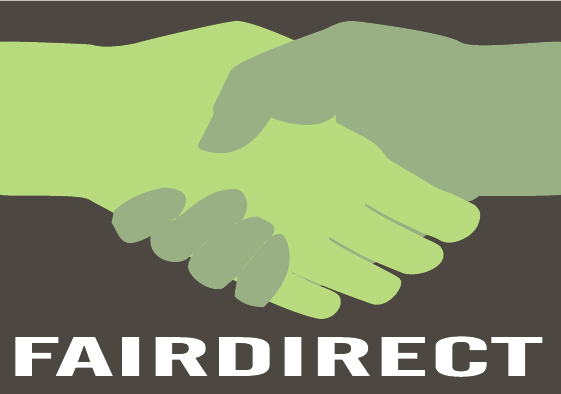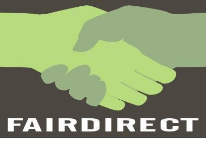
In March 2017, we developed an idea for an optical sorter machine for green beans of coffee and any other small items, built around a Raspberry Pi 3 and machine learning software. The machine and all knowledge about it should be open source, and the whole idea is to give small-scale coffee farmers low-cost tools to reduce their manual labor, increase their earnings, and improve their own living situation.
This idea had drawn quite some interest, so we decided to make it a reality. As the machine and everything about it has to be open source, it does not matter at all who actually develops it. So we are happy that the Edgeryders organization picked up on our idea, and development is underway since January 2018 in their programme “OpenVillage Academy”. You can read more here on their website about this project, including a full technical feasibility study and plan, and the progress they make towards a functional machine.
And since it is an open source project, in principle everyone can join. So we are interested to hear from you if you want to collaborate on this open source project, also in case you want to tell us how you intend to utilize this machine (in your roastery, as a coffee farmer etc.) and what your budget would be to buy or build one.
You can register your interest to collaborate by filling the form below (without any obligations to contribute):
[wysija_form id=”3″]
And while I’m inviting you: you’re also welcome to purchase “our” direct trade coffee from eight small coffee farmers in Hansapur, Gorkha, Nepal. We learned about the challenges of smallholder coffee farming when visiting them – see the video.


15 Comments
How can we help out? I didn’t see a link to a shared code repo?
There is no code yet, it’s only the idea so far. However, we are seriously considering to start this. So if you start a repo, we may contribute to it later 🙂
We work with coffee farmers in Timor-Leste – and think your idea a very good one.
I would like to see an Action Plan with time frames, resourcing and required expertise.
maybe it would be of benefit to seek participants in a project team and/or crowdfund the cost of development.
Peter, thank you for the feedback. Good to have some indication that this idea is actually useful in the fields. I’d also like to see that action plan of course 🙂 Hope I can bake developing the coffee sorter into a project starting October this year, but not sure yet. Will keep you updated here.
You, or anyone else here, is very welcome to take the idea and just make it happen of course. Including crowdfunding it (good proposal actually!).
Thanks for all the interest! We decided now to go ahead and develop the open source optical sorter for coffee via a crowdfunding campaign. Find the a pre-launch registration form embedded in the text above, allowing you to be notified when the campaign starts in late 2017 / early 2018.
Hi Matthias,
I have been thinking about this application for a few months. Your list of ideas and considerations are impressive and thorough. I think scoping the problem properly is crucial to its success and evolution — tackle small manageable essentials, and may not aim for a big single box/solution that tackles all the needs listed. E.g. for roasters their needs are different from at the farm sorting parchment beans. Their required throughput will be different too.
I plan to play with the image recognition part first anyway, as I consider correctness is the #1 priority before anything else. If you’d like to discuss/brainstorm a bit on the technicals, please feel free to email me. I think this project would be very fun to try!
Love the concept and project – and it’s growth potential (use it for grading, sorting flavors). The proposed cost is quite affordable as what many farmers are paying right now is extremely high (and most of them cannot even afford one). I think this fits very well with the objectives of many coffee organizations focusing on supporting farmers to have their own micro-mills, and this would be the first key step. I’d be curious to learn about a proposed training strategy especially for smallholder farmers in rural areas, and also for it to be run without electricity if we want to take it into rural areas. I’m yet to read and understand the tech part of this, but I’d love to explore those themes too (solar being a potential option).
Hi all
I actually am a mealworm farmer and your idea is something that I have been working on for a few months now. Hand sorting mealworms is like sorting your beans or coffee very time consuming. In this field everything is experimentation for types of feed and how to sort to save time which is where most of the money goes. I live in the US so trying to get a machine from China the shipping and duty fees are out of this world and no one in this country makes anything like that for less then 50,000 USD
I like what you are doing, and wish you luck with this project. I am like you and don’t have much money but I would love to help in so way if I can.
Bob
Hello Bob, that’s really interesting … I was wondering several times what else a small sorting machine could sort (nuts, berries, grains etc.) but would never have guessed that mealworms need sorting, too. So far, we made progress with the design as you can see in our development area. But still lots of work left. I hope to assemble a first machine later this summer, and then we will finish and optimize the sorting algorithm.
Assuming that we can design the machine so it can also sort mealworms … what are their special properties to take into account for a sorter machine, as compared to small, hard objects like coffee beans?
Hi Matthias
Sorry about taking so long to get back. Mealworms are much like ants they have a hard outer shell and can take a lot. In sorting mealworms you have the 3 of the 4 growth stages to sort. ( 1.) The mealworm itself is the young stage and they are for the most part green. ( 2. ) The pupa are white. ( 3. ) And the last stage are the adults or the beetles and they are black. So the color part is pretty easy.
Will post more later
Hi Matthias
I have started building a sorter using you design with a few differences. There will be air blow offs so as not to heart the mealworms.
Is anyone else doing anything with this idea?
Hi Matthias
Am starting to get parts in for my machine. Was wondering if you have done any more on your machine? Is there any way to add pictures to the post?
Hello Bob, and sorry for the super long time it took to reply. Missed the comment notification e-mail somehow. How’s your mealworm sorter build project doing in the meantime? From our side, no further progress on the machine beyond what is documented online so far. But I’m getting back to it now, as there seems to be a chance to get funding for finishing the development.
Thanks for any other informative website. The place else may just I am getting that kind of information written in such an ideal method?
I’ve a undertaking that I’m just now running on, and I
have been on the look out for such information.
Zhongruiweishi Optoelectronic Co., Ltd focuses on the development and production of intelligent color sorting equipment and is a well-known brand of color sorter manufacturers in China
1 Trackback or Pingback